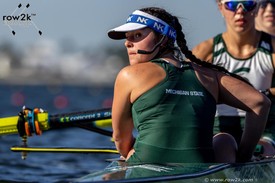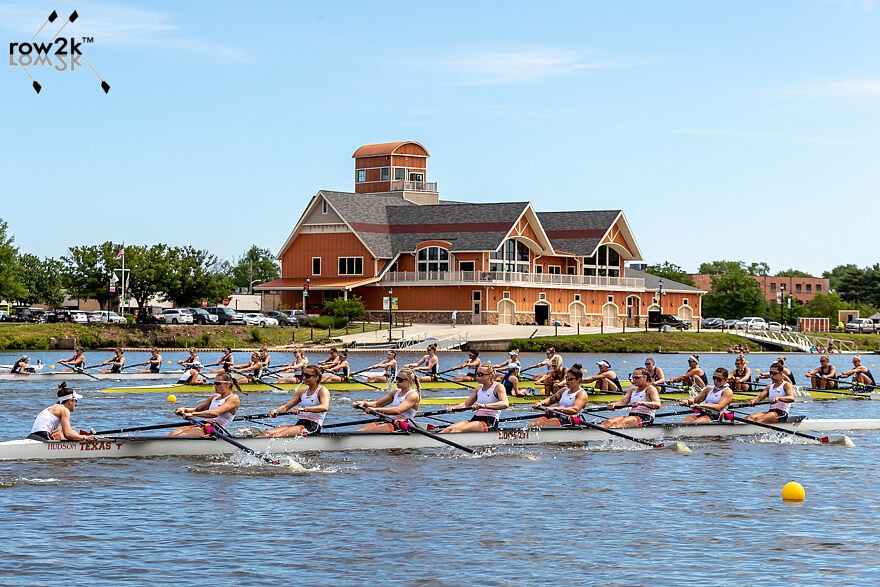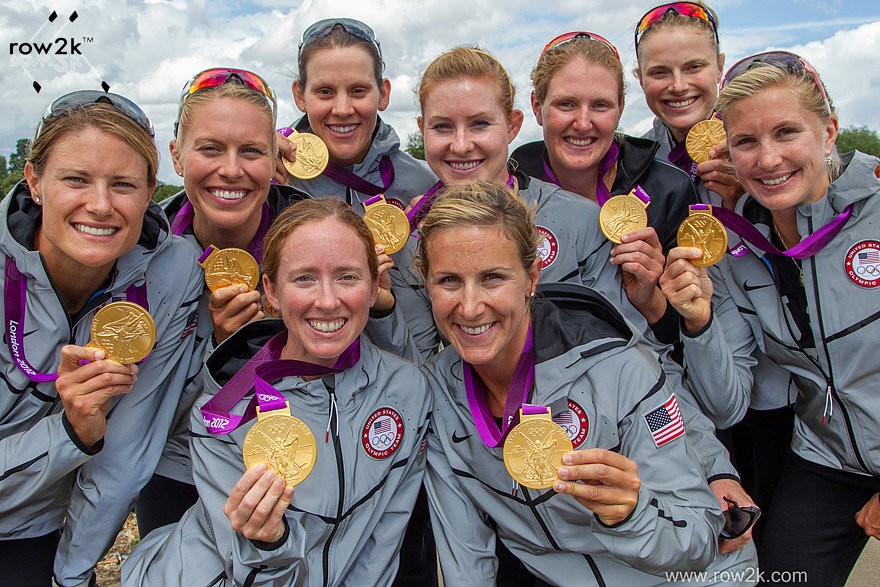
With the forced move to singles that the pandemic has brought on, we have been writing tips to (hopefully) make the transition easier. Last month we talked about blade depths - how digging deep is one of the most common mistakes in sculling, and how the grip and proper placement of the hands relative to one another help keep the blades horizontal through the drive. The other obvious cause of digging is the body lifting at the catch. This month we look at three reasons why the body goes up and what you can do to try and keep the body still.
The first is that the body is not set early enough. As the rower approaches the end of the slide, they try to reach for more and, in the process, dive down instead of reaching out. Most often, they then lift back up to start the drive. This lunge at the catch also causes the blades to sky and, in an attempt to find the water, the rower puts too much effort into the catch, sending the blades too deep. There are other detriments to lunging at the catch – it will create more check and the boat will be less stable - so early body preparation is imperative and, in our experience, one of the few things coaches actually agree on.

By half slide, the body should be fully prepared and the rest of the movement is simply the legs compacting into the catch. Maintain a still body; don't change the angle of the body as it approaches the end of the slide.
My favorite drill for working on this is half slide rowing - full body set by half slide; when you lengthen out to full, don't reach for more. A second drill is to add a pause at half slide, with the same emphasis as the ½ slide rowing drill - full body by the pause, then legs compacting with no more body reach after the pause as you move up the slide into the catch.
Another action that leads to digging is making the catch part of the drive as opposed to part of the recovery. Too often, rowers are so focused on the drive that they drive before catching. Not only does that cause a good deal of check, but putting the force of the drive into the catch again pushes the blades too deep. We talk about catching on the recovery, so that the lightness and looseness of the recovery goes into the catch.
One drill we use to emphasize this is the finish-to-catch drill. Sit at the finish and move to the catch at a normal speed, but stop when the blade is set in the water. There should be no pressure applied to the foot stretcher or face of the blade, no movement of the boat. It is a stationary drill. Once you go back to continuous rowing, try to make every stroke a finish to catch drill - catch first, then drive.
Another drill is to alternate pressure - one stroke ¼ pressure, 1 stroke ¾ pressure. The goal here is to keep the catch the same despite the different power application.

Another very common style that we feel leads to digging is rowing arms away out of bow, which often leads to stiff arms. If the elbows are locked as you go into the catch, it will be very difficult to put the blade in the water without lifting the entire body. The arms and the body have become one and the tension is now up in the shoulders.

We encourage rowers to think body out of bow, helping the arms to stay loose, so the catch can be made with the arms. The catch is now more subtle, the blades don't go as deep and, with the shoulders relaxed, the connection for the drive can be in the lats, allowing for a more horizontal pull.
To practice this, sit at the catch with the blades squared and buried and bounce the oar gently up and down without moving the upper arms. Focus on the bend in the elbow and use the forearm to lightly bounce the oar handle.

One of our main principles in rowing is to stay horizontal, making it possible to put the energy into moving the boat forward, towards the finish line. We hope these tips will allow you to do just that.
If you enjoy and rely on row2k, we need your help to be able to keep doing all this. Though row2k sometimes looks like a big, outside-funded operation, it mainly runs on enthusiasm and grit. Help us keep it coming, thank you! Learn more.
Comments | Log in to comment |
There are no Comments yet
| |
- Bont Rowing
- Calm Waters Rowing
- Concept 2
- Craftsbury Sculling
- The Crew Classic
- CrewLAB
- Croker
- Durham Boat Co.
- Empacher
- Faster Masters
- Filippi
- Fluidesign
- h2row.net
- HUDSON
- Live2Row Studios
- Nielsen-Kellerman
- Oak Ridge RA
- Peinert Boat Works
- Pocock Racing Shells
- Race1 USA
- RowKraft
- Rubini Jewelers
- Vespoli USA
- WinTech Racing
- Bont Rowing
- Calm Waters Rowing
- Concept 2
- Craftsbury Sculling
- The Crew Classic
- CrewLAB
- Croker
- Durham Boat Co.
- Empacher
- Faster Masters
- Filippi
- Fluidesign
- h2row.net
- HUDSON
- Live2Row Studios
- Nielsen-Kellerman
- Oak Ridge RA
- Peinert Boat Works
- Pocock Racing Shells
- Race1 USA
- RowKraft
- Rubini Jewelers
- Vespoli USA
- WinTech Racing

















